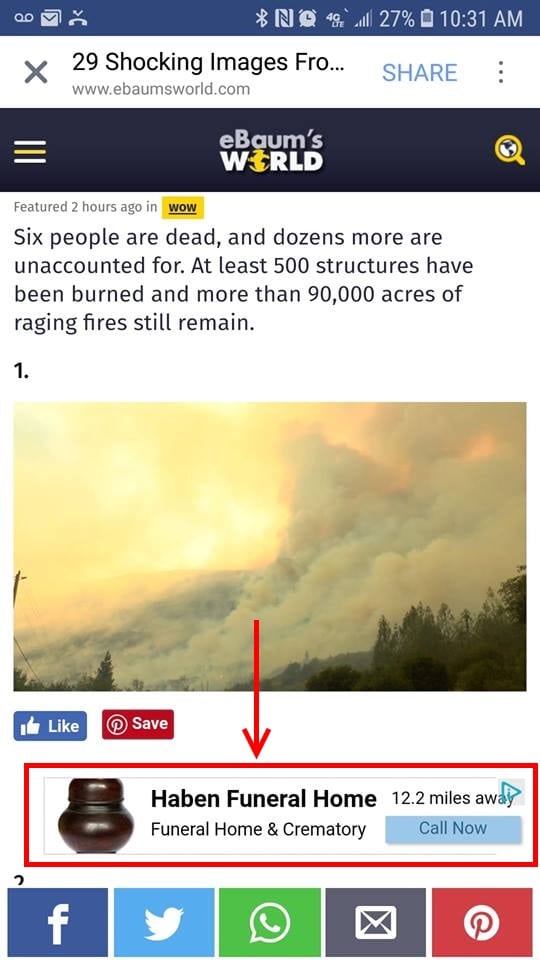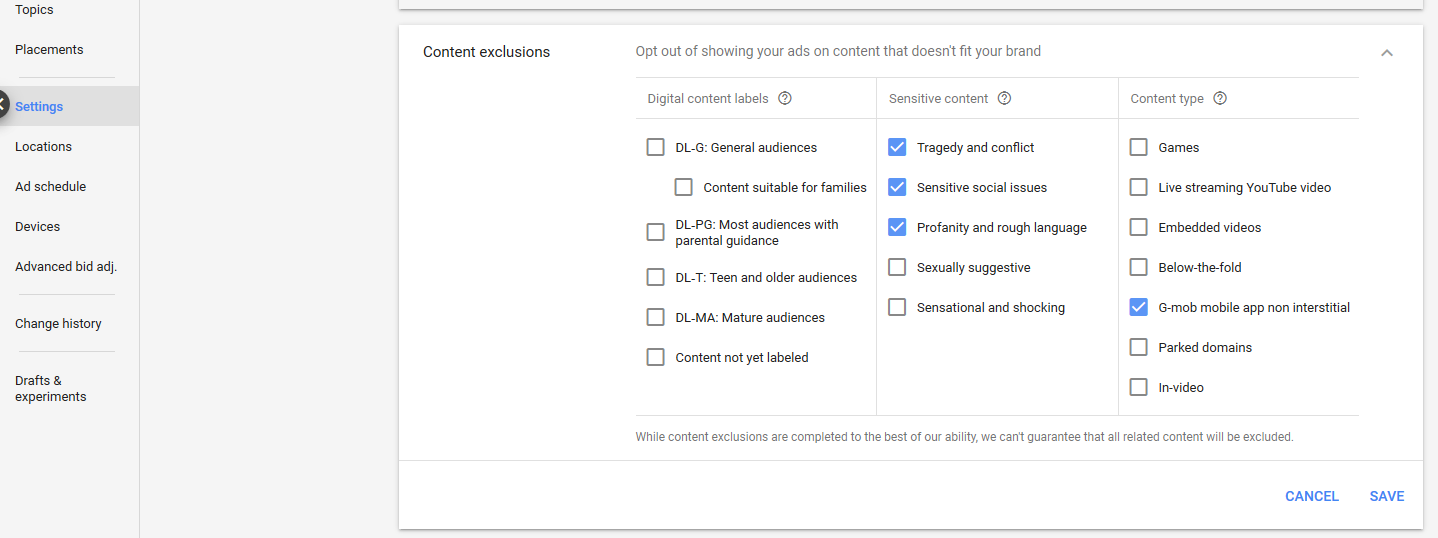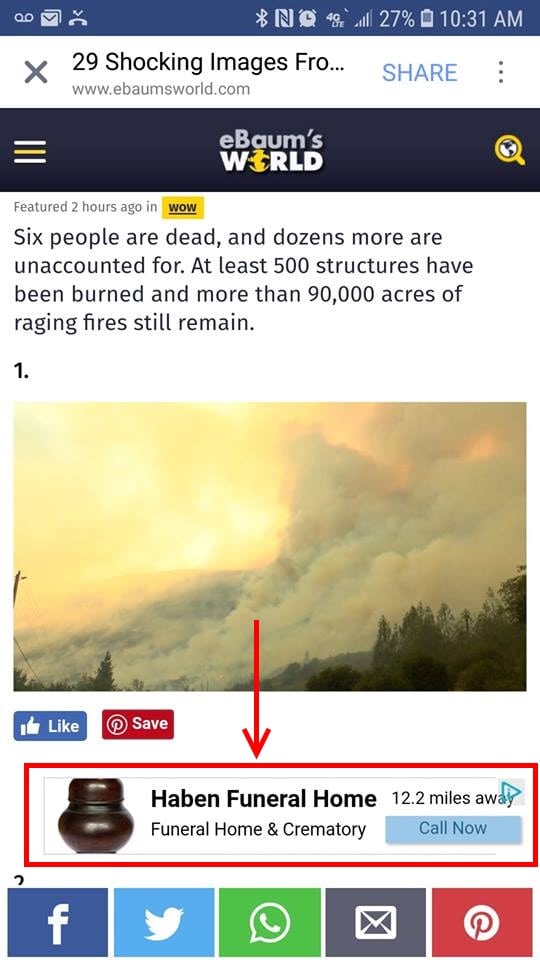The Google Display Network has the potential to generate massive traffic. That’s a powerful opportunity for any advertiser. For example, if you were advertising a funeral home, you might enter keywords such as “funeral,” “funeral home,” and “cremation” to instruct Google on the pages to show your ads. The story describes death, which is semantically close to “funerals” and “cremation.” So how do advertisers prevent this? Similarly, certain apps on a smartphone can show ads that almost certainly are ineffective. Add adsenseformobileapps.com as a negative placement and GDN ads won’t appear on mobile apps. This change simplifies reaching mobile users across the web and on apps. It may impact ads on mobile apps. Yes, Google is eliminating the placement as well as the GMob exclusion that you see in Settings > Content exclusions in the image above. The only surefire solution is to exclude mobile and tablet traffic entirely from your GDN campaigns.
Over the years Google Ads — formerly AdWords — has been that company’s revenue engine. But after it mastered keyword-based search, Google expanded its advertising offerings with the Display Network, which launched in 2005.
The Google Display Network has the potential to generate massive traffic. How massive? Well, GDN consists of “over 1 million websites, apps, videos, blogs, and other destinations” and serves over 180 billion impressions each month. That equals 80 percent of worldwide internet users.
That’s a powerful opportunity for any advertiser. But GDN can cause powerful harm when mistakes occur. Here are three dangers of advertising on the GDN and how you can avoid them.
Inappropriate Placements
The GDN allows many types of targeting. The most common is called “contextual.” This takes the keywords entered by an advertiser and matches them with the text on web pages where ads are displayed. For example, if you were advertising a funeral home, you might enter keywords such as “funeral,” “funeral home,” and “cremation” to instruct Google on the pages to show your ads.
However, it can backfire, as shown in the screenshot below. Presumably Haben Funeral Home does not want its ad appearing next to a tragic news story.

Likely a funeral home above does not want its ad appearing next to a news story documenting the tragic loss of six lives in a wildfire. But the GDN algorithm looks just at contextual relationships. The story describes death, which is semantically close to “funerals” and “cremation.” So how do advertisers prevent this?
First, go to Settings > Content exclusions in the GDN campaign setup.


COMMENTS